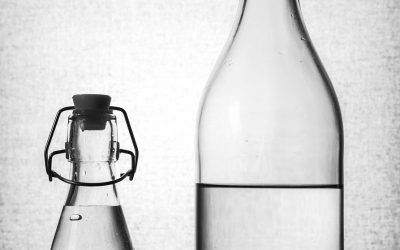A question that I got this week was in regards to increasing iron through diet. This particular person had low iron for loss of blood and was already on iron supplement. This individual did not care for eating meat which is known to have iron, but does eat fish. You can get iron from plant sources, but it’s not very well absorbed. To overcome this problem, add vitamin C. This can be in the form of a supplement or the actual food, but it needs to be taken each time you eat iron to help increase the absorption rate.
PLANT-BASED SOURCES OF IRON

Table from National Institute of Health reports RDAs for adults are 8mg for men and 18mg for women.
| Source | Serving Size | Iron |
|---|---|---|
| Tofu | 1/2 Cup | 3-7mg |
| Soy milk | 1 cup | 3mg |
| Beans | 1/2 cup | 2-4mg |
| lentils | 1/2 cup | 3mg |
| peas | 1/2 cup | 1mg |
| grits | 1/2 cup | 7mg |
| cream of wheat | 3/4 cup | 9mg |
| oatmeal | 1/2 cup | 7mg |
| blackstrap molasses | 1Tbsp | 4mg |
| spinach, cooked | 1/2 cup | 3mg |
| pistachio nuts | 1oz (47nuts) | 2mg |
| Spirulina | 1tsp | 2mg |
Additional Plant-based iron foods and sample meal plan of getting enough iron can be found at the Vegetarian Resource Group.
VITAMIN C TO HELP WITH IRON ABSORPTION
Due to Iron’s low absorption rate in plant foods, adding vitamin C can help increase the absorption of iron from plants. Eating vitamin C at the same time as iron can help achieve this effect. Vitamin C is going to come from your fruits and vegetables. Vitamin C is sensitive to heat, so if cooking go with a quick steam or heating. Otherwise, squeeze lemon or lime juice over your food at end of cooking or add some raw fruits or veggies.
WHAT TO AVOID FOR BETTER IRON ABSORPTION
Certain foods have compounds that can inhibit the absorption of iron. Some are naturally in the plant, so adding vitamin C is helpful. Others can be avoided when eating a meal such as drinking tea, coffee, or milk. Avoid taking turmeric or curcumin supplements with food when your iron stores are low as it binds to iron thus inhibiting the absorption.
SUMMARY
Foods to include for more iron:
- Dark leafy green vegetables (spinach, Swiss chard, collard greens, and kale)
- Whole grains (quinoa, barley, bulgur, and brown rice)
- Legumes, pulses, nuts, and seeds (beans, peas, and lentils)
- Dried fruit (peaches, prunes, apricots, and raisins)
- Fortified cereals and rice
- Spirulina (powder made from microalgae)
- tofu
Some Foods high in vitamin C to increase iron absorption:
- Citrus fruits (oranges, grapefruit, and lemons); can squeeze lemon or lime over food after plated
- Tomatoes
- Bell Peppers
- Berries
- Melon
- Broccoli
MEAL IDEAS
- 1/3 cup rolled oats cooked 2Tbsp wheat germ + 1.5oz raisins and topped with strawberries
- 1 cup Lentil soup + ½ cup cooked spinach with bell pepper
- Veggies and rice crackers with tahini dip
- 1c sautéed Swiss chard over 1cup cooked quinoa with lemon
- 1/3 cup of hummus and red bell peppers
- Cooked lentils with parsley
- Cook 1cup spinach with garlic and squeeze of lemon
- Bean Chili with tomato sauce
- Salad greens topped with berries
- Black bean nachos + salsa
- Broccoli Rabe with sun-dried tomatoes cooked in extra-virgin olive oil seasoned with salt/pepper
- Mediterranean Wrap: cooked couscous then mix in lemon juice, extra virgin olive oil, parsley, mint, salt/pepper, and garlic. Put couscous on a spinach wrap with chickpeas, tomato, and cucumber.
- Whole wheat waffle topped with strawberry sauce
- 3-4” bagel + 1 orange, sliced
- ½ cup Cream of wheat + ½ cup strawberries
- Smoothie with leafy greens & lemon or orange juice.
- Tofu stir-fry with onions, bell peppers, bok choy, and other vegetables of choice
- An ounce of nuts and fruit
AVOID: tea, coffee, milk and cocoa with meals which may inhibit absorption of plant-based iron. Black tea seems to be the most potent.
BONUS
Cook your food in a cast iron skillet may help increase iron intake. Depending on the coating of the cast iron, the iron may leach into your food during cooking process.






0 Comments